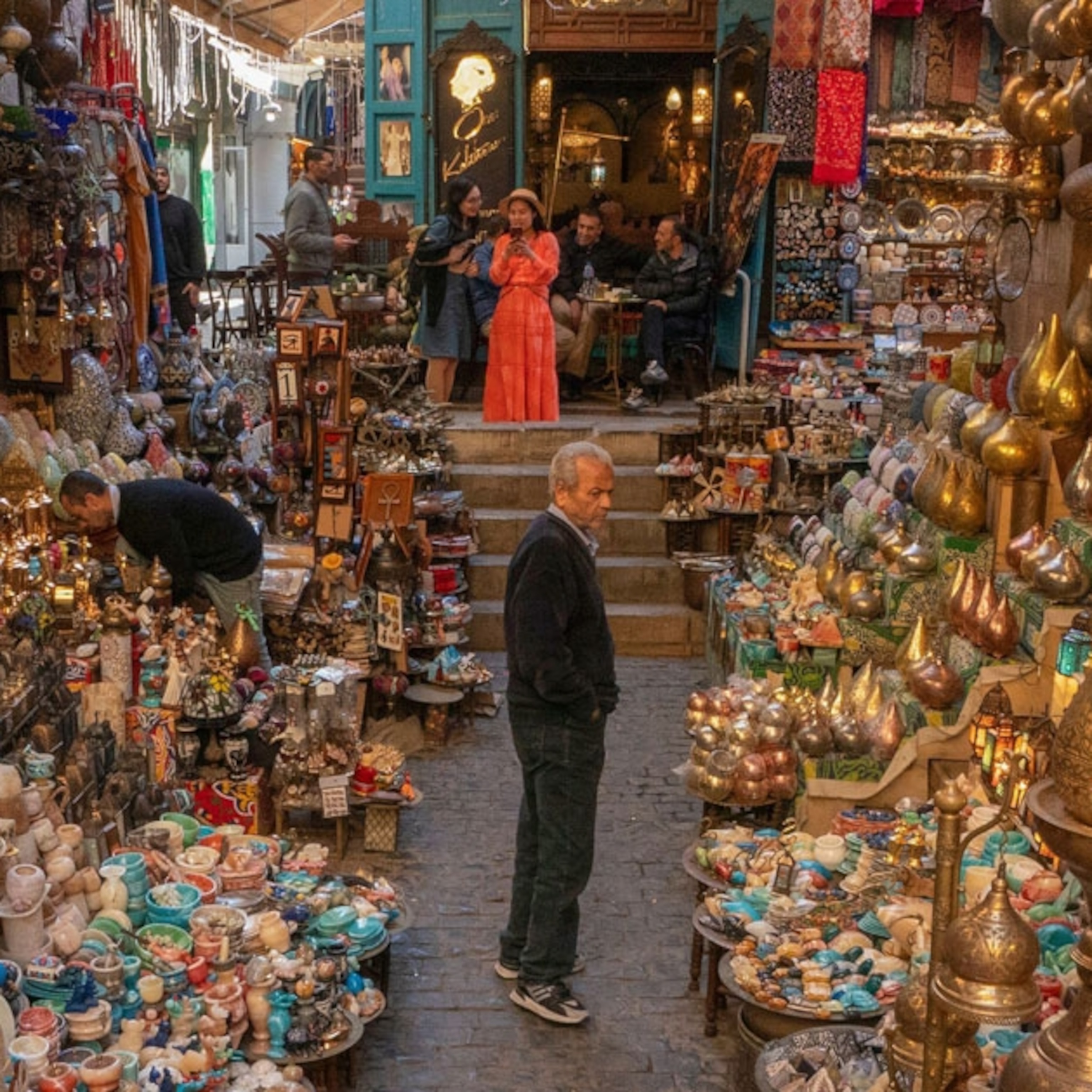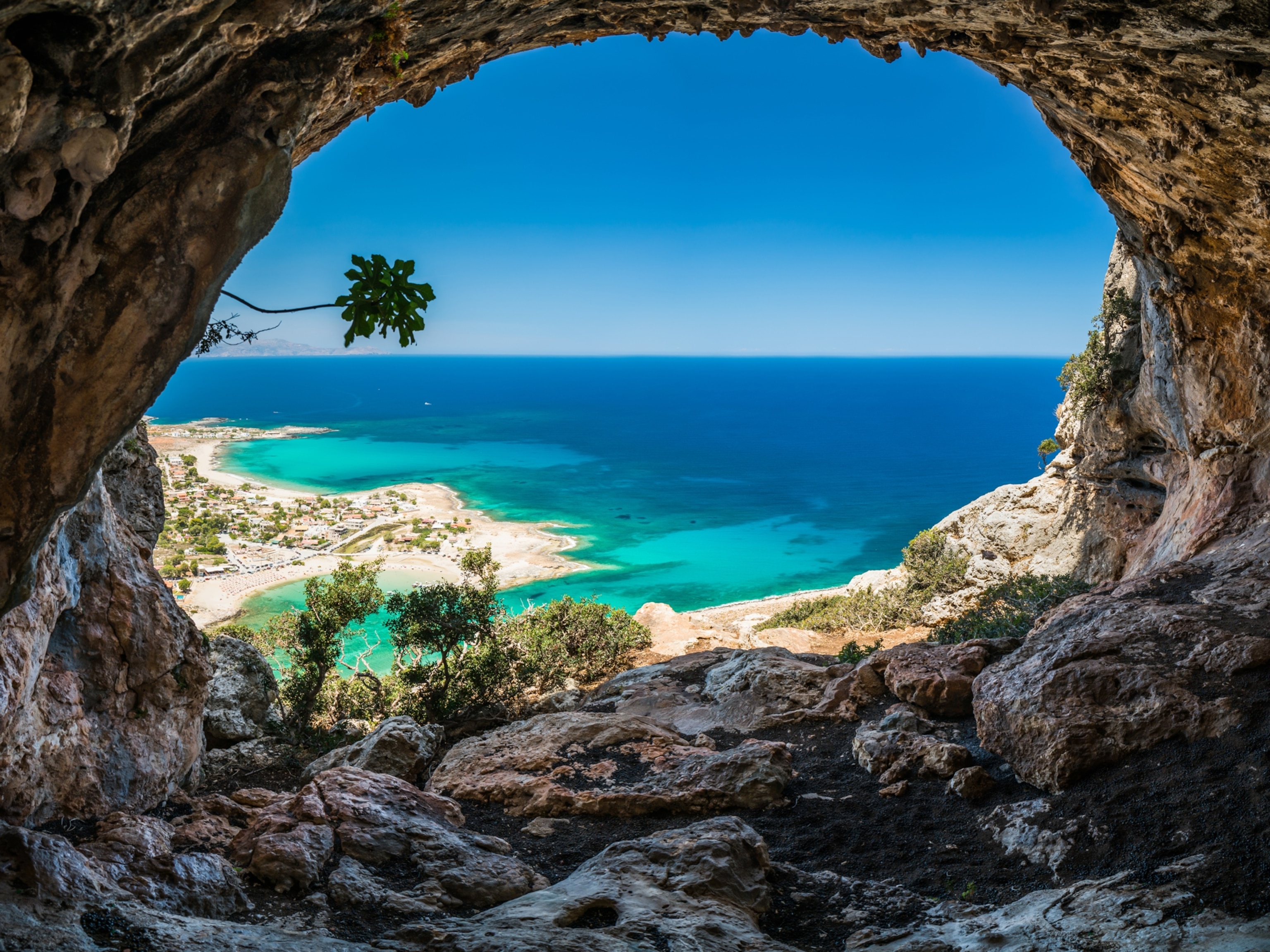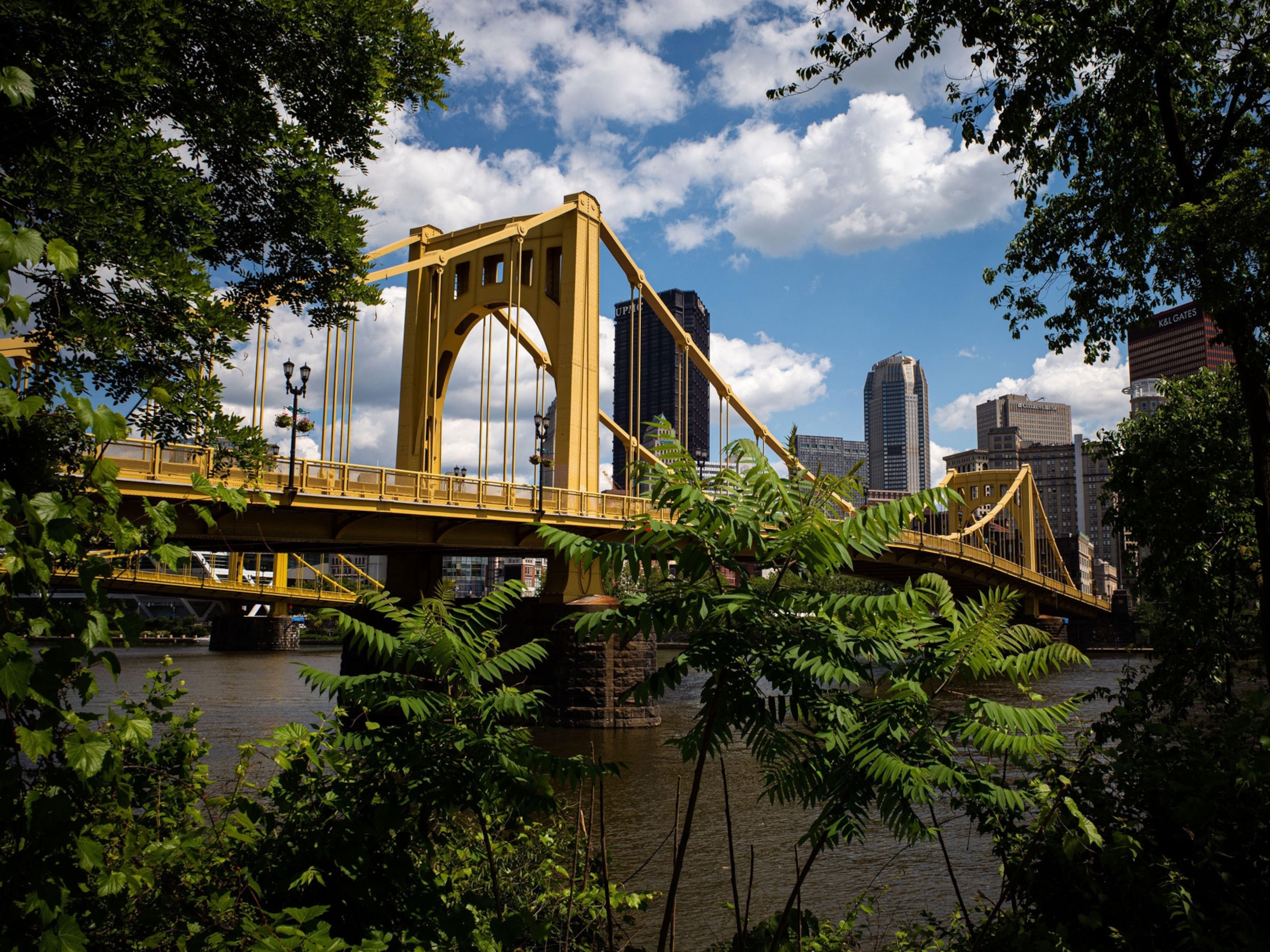Exclusive: New Natural History Museum Abu Dhabi features two fighting T. rexes
The largest museum of its kind in the Middle East opens today with an awe-inspiring dinosaur wing, a massive blue whale skeleton within arm's reach, and a stunning exploration of the region’s natural history.
The Natural History Museum Abu Dhabi (NHMAD) opens its doors to the public on November 22, joining the ranks of legendary institutions—New York’s American Museum of Natural History, Pittsburgh’s Carnegie Museum of Natural History, London’s Natural History Museum—dedicated to telling the story of the planet. National Geographic received exclusive access during NHMAD’s final build-out for a first look at some of its world-class installations.
The star of NHMAD is undoubtedly Stan, one of the most complete Tyrannosaurus rex skeletons ever found. The 38-foot skeleton is made even more awe-inspiring by its display: as part of the first ever depiction of two battling T. rexes. That’s just one of the dynamic megafauna showcases—which include a freshly cleaned blue whale skeleton and a four-tusk elephant excavated from the emirate of Abu Dhabi—driven by the latest insights from paleontologists. Of course, the museum is more than its fossils: Visitors experience everything from an interactive history of the Earth to the famed Murchison meteorite, laden with amino acids not found on our planet.
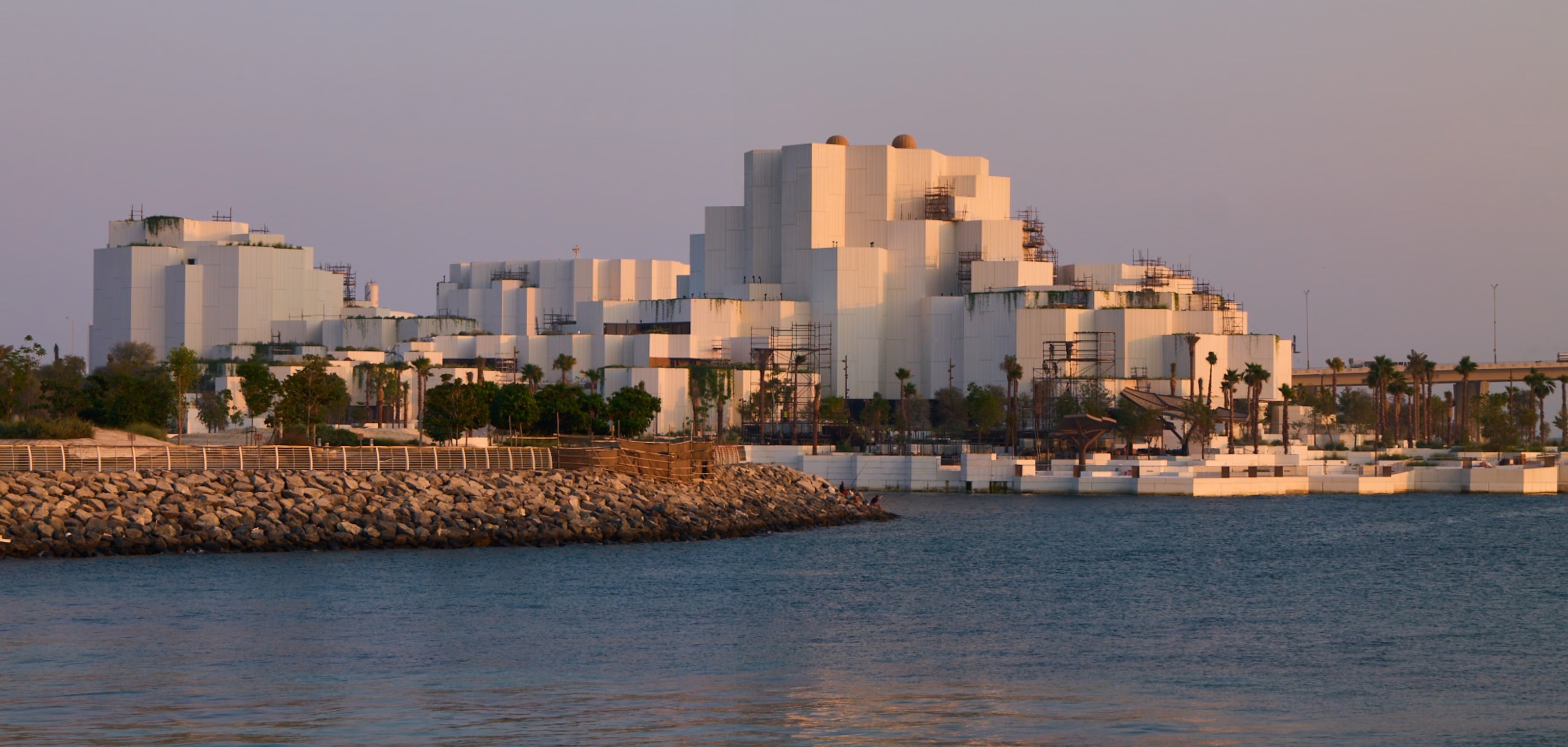


“What we want to accomplish is that little light in the eye of every single child—they walk in and their eyes just open up, and they look and say, ‘Oh my goodness. I can't believe this actually existed here,’” said Mohamed Khalifa Al Mubarak, the chairman of the Department of Culture and Tourism, during an exclusive National Geographic visit to the museum.
(We just learned where the asteroid that ended dinosaurs came from.)
The Natural History Museum Abu Dhabi is the largest of its kind in the Middle East, and just one of several new museums opening in the Saadiyat Cultural District—part of an initiative by the UAE’s Department of Culture and Tourism that will include outposts of the Guggenheim and the Louvre, among others. Even the view from NHMAD feels special: the nearly 377,000-square-foot museum rises from the waterfront of Saadiyat Island like a rock formation and looks out over the gulf, with a botanical garden on its grounds.
“In today's world—where all we hear about is AI and technology and how the world's going to change—you come to a place like this and the first image you get when you get on the roof, you cannot not think about the human capability that created this,” Al Mubarak said. “We need to celebrate that more than ever.”
For anyone already searching for flight deals to the UAE, here’s a sneak peek at some of the Natural History Museum Abu Dhabi’s freshly opened exhibits:
Battle of the kings
Few dinosaurs reign as powerfully as T. rex in pop culture. With that in mind, the Natural History Museum Abu Dhabi chose not only to display the real fossilized bones of Stan but put the 38-foot-tall skeleton into an action-packed scene. As Stan was cast and recast for tours of museums over these past few decades, a curious detail emerged: bite marks on its neck. Paleontologists believe that before meeting his end in present-day South Dakota, Stan had fought another great predator. As visitors to NHMAD turn a corner, they’ll witness Stan locked in battle with another T. rex—a first for any dinosaur display—as both lay claim to the fallen triceratops at their feet.
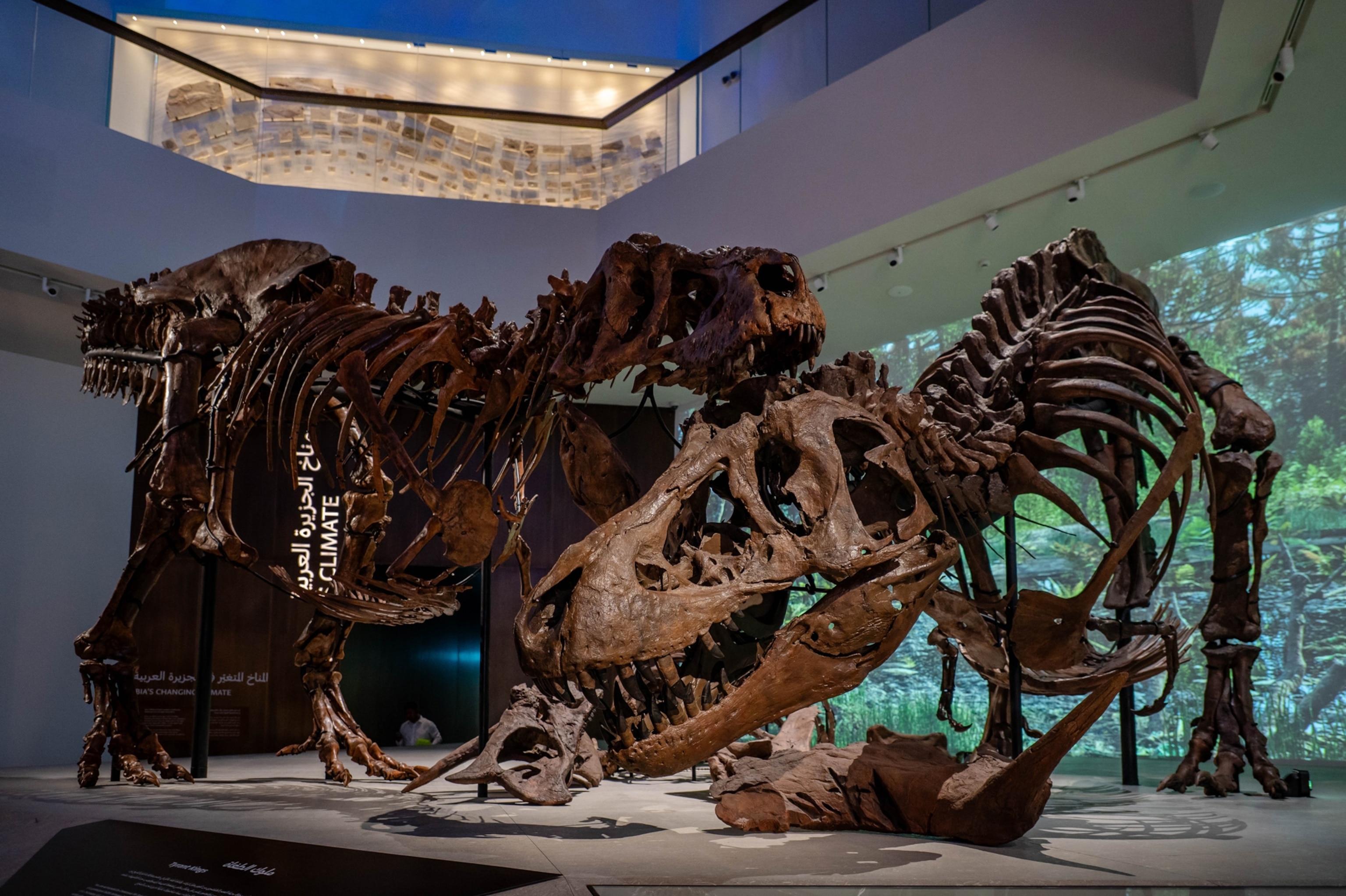
Walking with sauropods
Greeting museum-goers in the main atrium of NHMAD are five 75-foot-tall sauropods: Two Diplodocus, one Brachiosaurus, one Kaatedocus, and one Barosaurus. Unlike other major sauropod exhibits, the public will not be cordoned off from the specimens. Phillip Manning, NHMAD’s director of science, told National Geographic that the team had been inspired by the magazine’s June 1989 cover featuring an infant sauropod walking at the feet of two full-grown adults. The atrium, he said, puts visitors “amongst the toes of the sauropods.”
(How to bring a 75-foot-long dinosaur back to life.)
In their backyard
As the Middle East’s largest natural history museum, NHMAD has gone to great effort to tell the story of the region’s surprising geological history. While the Arabian Peninsula today conjures images of towering sand dunes and gleaming urban landscapes, Abu Dhabi looked vastly different seven million years ago. A river ran through the land, supporting a host of flora and towering fauna. Among them was Stegotetrabelodon syrticus, a massive four-tusked elephant found in the Baynunah Formation, a paleontological site in the western region of the emirate.
In the whale’s shadow
Stan’s megafauna competition at NHMAD just might be an 85-foot-long blue whale that washed ashore in Nova Scotia, Canada, in 2021. Showcased as a skeleton, it’s part of an exhibit exploring the ecosystem that springs to life when a whale dies and falls to the ocean floor. But visitors to NHMAD get an extra helping of awe: While the iconic blue whale exhibits in New York and London’s museums are mounted high above visitors of, the Abu Dhabi whale hovers just 10 feet off the ground, letting museumgoers truly experience its gargantuan size.
“What is beautiful about that whale is how much of a presence she has in that room,” said Judith McAlester, the museum’s project manager. “And I don't think that's ever going to change, no matter what we put in there.”
The inspiration for the dino sensation
Big dinosaurs often get all the glory, but the Natural History Museum Abu Dhabi reserved some of the spotlight for Deinonychus. Its name is derived from the Latin for “terrible claw,” but visitors may recognize it by a common misnomer: velociraptor. Author Michael Crichton was especially drawn to Deinonychus when he was doing research for Jurassic Park. Knowing the name was a mouthful, he took some artistic license and rechristened the creature with the false name, which stayed in Steven Spielberg’s film adaptation. At NHMAD, visitors are greeted by the human-height Deinonychus, cast in bronze, right outside the front door, then get to see two attacking a Tenontosaurus on a plinth inside the dinosaur hall.



